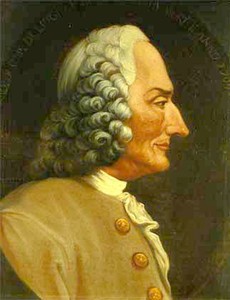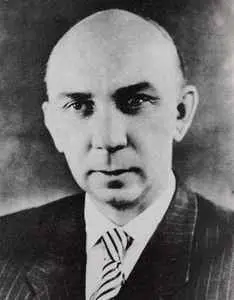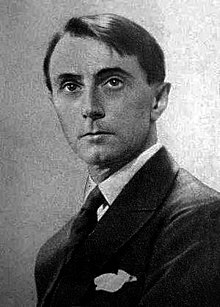
Jean-Philippe Rameau |
Jean-Philippe Rameau
… One must love him with that tender reverence that is preserved in relation to the ancestors, a little unpleasant, but who knew how to speak the truth so beautifully. C. Debussy

Having become famous only in his mature years, J.F. Rameau so rarely and sparingly recalled his childhood and youth that even his wife knew almost nothing about it. Only from documents and fragmentary memoirs of contemporaries can we reconstruct the path that led him to the Parisian Olympus. His date of birth is unknown, and he was baptized on September 25, 1683 in Dijon. Ramo’s father worked as a church organist, and the boy received his first lessons from him. Music immediately became his only passion. At the age of 18, he went to Milan, but soon returned to France, where he first traveled with itinerant troupes as a violinist, then served as an organist in a number of cities: Avignon, Clermont-Ferrand, Paris, Dijon, Montpellier, Lyon. This continued until 1722, when Rameau published his first theoretical work, A Treatise on Harmony. The treatise and its author were discussed in Paris, where Rameau moved in 1722 or early 1723.
A deep and sincere man, but not at all secular, Rameau acquired both adherents and opponents among the outstanding minds of France: Voltaire called him “our Orpheus”, but Rousseau, a champion of simplicity and naturalness in music, sharply criticized Rameau for “scholarship” and ” abuse of symphonies ”(according to A. Gretry, Rousseau’s hostility was caused by Rameau’s overly straightforward review of his opera“ Gallant Muses ”). Deciding to act in the operatic field only at the age of almost fifty, Rameau from 1733 became the leading opera composer of France, also not leaving his scientific and pedagogical activities. In 1745 he received the title of court composer, and shortly before his death – the nobility. However, success did not make him change his independent demeanor and speak out, which is why Ramo was known as an eccentric and unsociable. The metropolitan newspaper, responding to the death of Rameau, “one of the most famous musicians in Europe,” reported: “He died with stamina. Different priests could not get anything from him; then the priest appeared … he spoke for a long time in such a way that the sick man … exclaimed with fury: “Why the hell did you come here to sing to me, mister priest? You have a false voice!’” Rameau’s operas and ballets constituted an entire epoch in the history of French musical theatre. His first opera, Samson, to a libretto by Voltaire (1732), was not staged because of the biblical story. Since 1733, Rameau’s works have been on the stage of the Royal Academy of Music, causing admiration and controversy. Associated with the court scene, Rameau was forced to turn to plots and genres inherited from J. B. Lully, but interpreted them in a new way. Lully’s admirers criticized Rameau for bold innovations, and the encyclopedists, who expressed the aesthetic demands of the democratic public (especially Rousseau and Diderot), for loyalty to the Versailles opera genre with its allegorism, royal heroes and stage miracles: all this seemed to them a living anachronism. Rameau’s genius talent determined the high artistic merit of his best works. In the musical tragedies Hippolytus and Arisia (1733), Castor and Pollux (1737), Dardanus (1739), Rameau, developing the noble traditions of Lully, paves the way for the future discoveries of K.V. original rigor and passion.
The problems of the opera-ballet “Gallant India” (1735) are in tune with Rousseau’s ideas about the “natural man” and glorify love as a force that unites all peoples in the world. The opera-ballet Platea (1735) combines humor, lyrics, grotesque and irony. In total, Rameau created about 40 stage works. The quality of the libretto in them was often below any criticism, but the composer jokingly said: “Give me the Dutch Newspaper and I will set it to music.” But he was very demanding of himself as a musician, believing that an opera composer needs to know both the theater and human nature, and all kinds of characters; to understand both dance, and singing, and costumes. And the lively beauty of Ra-mo’s music usually triumphs over the cold allegorism or courtly splendor of traditional mythological subjects. The melody of the arias is distinguished by its vivid expressiveness, the orchestra emphasizes dramatic situations and paints pictures of nature and battles. But Rameau did not set himself the task of creating an integral and original operatic aesthetics. Therefore, the success of Gluck’s operatic reform and the performances of the era of the French Revolution doomed Rameau’s works to a long oblivion. Only in the XIX-XX centuries. the genius of Rameau’s music was again realized; she was admired by K. Saint-Saens, K. Debussy, M, Ravel, O. Messiaen.
A significant area of u3bu1706bRamo’s work is harpsichord music. The composer was an outstanding improviser, 1722 editions of his pieces for harpsichord (1728, 5, c. 11) included XNUMX suites in which dance pieces (allemande, courante, minuet, sarabande, gigue) alternated with characteristic ones that had expressive names (“ Gentle Complaints”, “Conversation of the Muses”, “Savages”, “Whirlwinds”, etc.). Compared to the harpsichord writing by F. Couperin, nicknamed “great” for his mastery during his lifetime, Rameau’s style is more catchy and theatrical. Yielding sometimes to Couperin in the filigree refinement of details and the fragile iridescence of moods, Rameau in his best plays achieves no less spirituality (“Birds Calling”, “Peasant Woman”), excited ardor (“Gypsy”, “Princess”), a subtle combination of humor and melancholy ( “Chicken”, “Khromusha”). Rameau’s masterpiece is the Variations Gavotte, in which an exquisite dance theme gradually acquires hymnical severity. This play seems to capture the spiritual movement of the era: from the refined poetry of gallant festivities in the paintings of Watteau to the revolutionary classicism of David’s paintings. In addition to solo suites, Rameau wrote XNUMX harpsichord concertos accompanied by chamber ensembles.
Rameau’s contemporaries became known first as a musical theorist, and then as a composer. His “Treatise on Harmony” contained a number of brilliant discoveries that laid the foundations for the scientific theory of harmony. From 1726 to 1762 Rameau published another 15 books and articles in which he expounded and defended his views in polemics with opponents led by Rousseau. The Academy of Sciences of France highly appreciated the works of Rameau. Another outstanding scientist, d’Alembert, became a popularizer of his ideas, and Diderot wrote the story Rameau’s Nephew, the prototype of which was the real-life Jean-Francois Rameau, the son of the composer’s brother Claude.
The return of Rameau’s music to concert halls and opera stages began only in the 1908th century. and primarily thanks to the efforts of French musicians. In parting words to the listeners of the premiere of Rameau’s opera Hippolyte and Arisia, C. Debussy wrote in XNUMX: “Let’s not be afraid to show ourselves either too respectful or too touched. Let’s listen to Ramo’s heart. There has never been a voice more French … “
L. Kirillina
Born in the family of an organist; seventh of eleven children. In 1701 he decides to devote himself to music. After a short stay in Milan, he became the head of the chapel and organist, first in Avignon, then in Clermont-Ferrand, Dijon, and Lyon. In 1714 he is experiencing a difficult love drama; in 1722 he publishes a Treatise on Harmony, which allowed him to get the long-desired position of organist in Paris. In 1726 he marries Marie-Louise Mango from a family of musicians, with whom he will have four children. Since 1731, he has been conducting the private orchestra of the noble dignitary Alexandre de La Pupliner, a music lover, a friend of artists and intellectuals (and, in particular, Voltaire). In 1733 he presented the opera Hippolyte and Arisia, causing a heated controversy, renewed in 1752 thanks to Rousseau and d’Alembert.
Major operas:
Hippolytus and Arisia (1733), Gallant India (1735-1736), Castor and Pollux (1737, 1154), Dardanus (1739, 1744), Platea (1745), Temple of Glory (1745-1746), Zoroaster (1749-1756), Abaris, or Boreads (1764, 1982).
At least outside of France, Rameau’s theater has yet to be recognized. There are obstacles on this path, connected with the character of the musician, with his special destiny as the author of theatrical works and partly indefinable talent, sometimes based on tradition, sometimes very uninhibited in search of new harmonies and especially new orchestration. Another difficulty lies in the character of Rameau’s theater, replete with long recitatives and aristocratic dances, stately even in their ease. His penchant for a serious, proportionate, deliberate, musical and dramatic language, almost never becoming impulsive, his preference for prepared melodic and harmonic turns – all this gives the action and expression of feelings monumentality and ceremoniality and, as it were, even turns the characters into a background.
But this is only the first impression, not taking into account the dramatic knots in which the composer’s gaze is fixed on the character, on this or that situation and highlights them. In these moments, all the tragic power of the great French classical school, the school of Corneille and, to an even greater extent, Racine, comes to life again. The declamation is modeled on the basis of the French language with the same care, a feature that will remain until Berlioz. In the field of melody, the leading place is occupied by ariose forms, from flexible-gentle to violent, thanks to which the language of the French opera seria has been established; here Rameau anticipates composers of the end of the century, such as Cherubini. And some elation of militant choirs of warriors may remind Meyerbeer. Since Rameau prefers the mythological opera, he begins to lay the foundations of the “grand opera”, in which power, grandeur and variety must be combined with good taste in stylization, and with the beauty of the scenery. Rameau’s operas include choreographic episodes accompanied by often beautiful music that has a descriptive dramatic function, which gives the performance charm and attraction, anticipating some very modern solutions close to Stravinsky.
Having lived more than half of his years away from the theater, Rameau was reborn to a new life when he was called to Paris. His rhythm changes. He marries a very young woman, appears in theatrical periodicals with scientific works, and from his late “marriage” the French opera of the future is born.
G. Marchesi (translated by E. Greceanii)





